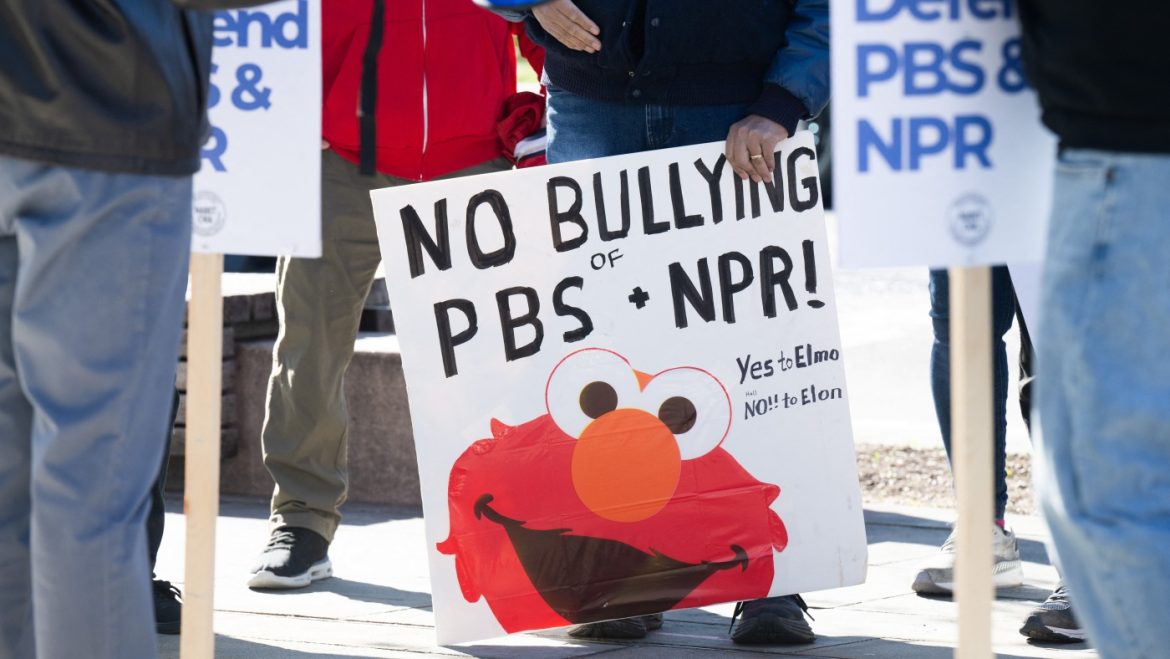President Donald Trump’s drive to eliminate federal funding for NPR (National Public Radio) and PBS (Public Broadcasting Service) has emerged as a highly contentious issue, reflecting broader political and cultural conflicts over public media, government spending, and media bias. This report carefully examines the background, executive actions, congressional challenges, implications for public media, and the larger political dynamics surrounding this effort, drawing on multiple contemporary news accounts.
Context and Scope of Trump’s Executive Order and Funding Request
In a significant move, President Trump signed an executive order directing the Corporation for Public Broadcasting (CPB) to cease funding NPR and PBS, accusing these organizations of producing “biased and partisan” content. Concurrently, the White House formally requested Congress to rescind approximately $1.1 billion in federal subsidies allocated for public broadcasting over the next two years. This proposal is part of a broader package seeking to claw back about $9.4 billion in previously approved spending, which also includes cuts to foreign aid programs administered by agencies like USAID and the African Development Foundation.
Historically, federal subsidies channeled through the CPB have supported a broad network of public media outlets across the United States, including some 1,500 public radio and television stations. These funds enable programming that may not attract commercial sponsors, particularly benefiting rural and underserved communities. The Trump administration’s executive order and congressional request are unprecedented in their explicit aim to eliminate taxpayer support for these media institutions.
Legal and Congressional Hurdles
While President Trump’s executive order commands the CPB’s board to defund NPR and PBS, CPB, NPR, and PBS representatives have maintained that the White House lacks the authority to unilaterally terminate these funds without congressional approval. The CPB board itself requires a quorum for decision-making, and uncertainties remain about compliance with the executive directive given existing statutory mandates.
Most critically, Congress retains control over federal appropriations. Congressional leaders and lawmakers must decide whether to acquiesce to the president’s request to claw back already approved funding. Given the size of the rescission—$1.1 billion earmarked for public broadcasting—and existing political divisions, this has sparked intense debate and lobbying, with public media executives urging Congress to maintain funding. Observers note that terminating funding would have little effect on the national debt, which stands in the tens of trillions, but would significantly impact public broadcasting’s operational viability.
Impact on Public Media Systems and Communities
Public broadcasting leaders and advocates warn that cutting off federal funding would be devastating, especially for smaller stations and rural areas. These stations often struggle to generate sufficient revenue through donations and corporate sponsorship alone. Many communities rely heavily on public radio and television for news, educational content, and cultural programming that commercial outlets do not provide.
Eliminating federal funds risks shuttering many smaller outlets outright, weakening the broader public media ecosystem. This contraction could reduce the diversity and reach of programming, impair coverage in regions with limited media competition, and diminish national programs such as the PBS NewsHour. Public broadcasting is viewed by supporters as a cornerstone of informed citizenship, offering trusted and non-commercial news in an era of media fragmentation and misinformation.
Political Motivations and Cultural Contestations
The Trump administration’s actions come amid heightened cultural and political polarization. The White House has labeled NPR and PBS as purveyors of “woke propaganda,” reflecting the former president’s broader clashes with cultural institutions and perceived media bias. The campaign to defund public media fits into a conservative agenda of reducing government spending, dismantling institutions seen as liberal-leaning, and reshaping media influences.
Opponents of the cuts argue that this move undercuts public interest journalism and restricts media plurality. The funding rescission contributes to a larger pattern where Republican officials have sought to weaken public institutions that have traditionally operated with some degree of bipartisan support. This issue also engages ideological debates about the role of taxpayer money in supporting culturally significant but non-commercial media.
Broader Fiscal and Policy Considerations
The requested funding rescission, coupled with other cuts—such as a steep reduction in foreign aid—forms part of President Trump’s broader fiscal retrenchment efforts. Although the scale of the $9.4 billion cut is significant, it barely impacts the overall $36 trillion national debt but signals priorities in trimming government programs along partisan lines.
Some analysts suggest that, while Trump can publicly pressure and issue executive orders, the actual success of defunding NPR and PBS depends on persuading Republican-controlled congressional committees and the House to vote for rescission. Legislative resistance, public campaigns in favor of preserving public broadcasting, and litigation against the executive order (such as PBS suing the administration) indicate ongoing legal and political battles.
Conclusion: A Pivotal Moment for Public Broadcasting in America
Trump’s executive order and congressional appeal to eliminate federal funding for NPR and PBS represent a dramatic challenge to the public media landscape in the United States. The effort is as much about ideological control over media narratives as it is about budgetary discipline. The consequences of such defunding would reverberate deeply through smaller local stations and underserved communities, risking the erosion of a trusted source of news and cultural programming.
At its core, this controversy encapsulates the strains in American democracy regarding media trust, partisan divisions, and the government’s role in fostering diverse, accurate public information. The fate of public broadcasting funding lies at the intersection of law, politics, culture, and public interest—a complex battleground that will shape how millions of Americans receive information in the future. The outcome awaits Congressional action, potential judicial rulings, and the public’s ongoing engagement with the value of public media in a democratic society.


